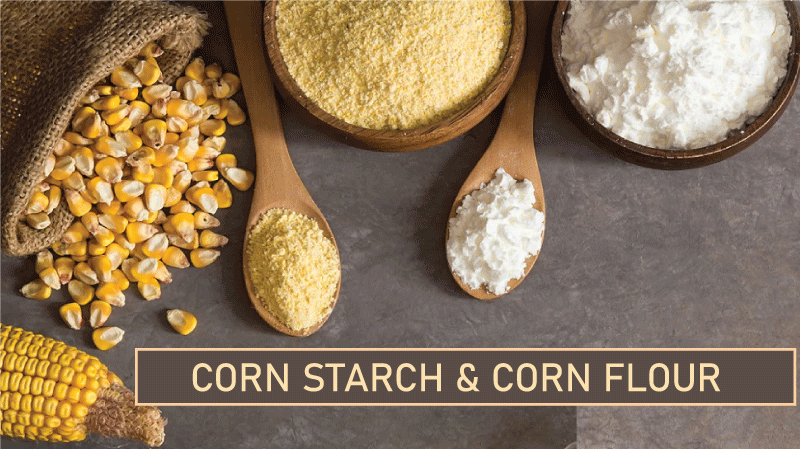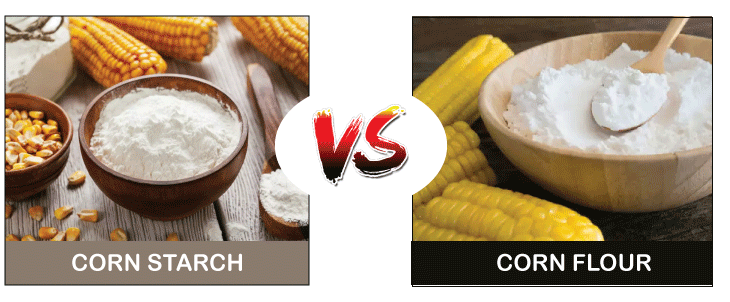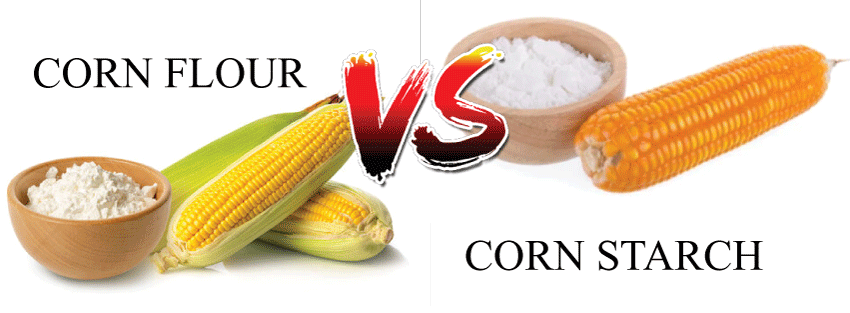Difference Between Cornstarch and CornflourIntroductionAlthough cornflour and cornflour are thickening agents derived from corn, their nutrient profiles, uses, gluten contents, and flavors vary. Although these ingredients appear somewhat familiar, they have various culinary applications. The effects are frequently tragic when we try to replace them with one another. 
CornstarchA carbohydrate obtained from the corn endosperm is called cornstarch, which is often referred to as cornflour. Usually, cornflour is used in the kitchen to thicken marinades, sauces, gravies, glazes, and dishes such as soups, casseroles, pies, and other desserts. Globally, it is used in cuisines, with North America and Asia leading production and consumption. The ability to thicken items makes cornflour highly valued. It comprises long strands of starch molecules that will unravel and swell when heated in moisture. The thickening is brought on by this swelling process, also known as gelatinization. Cornstarch can be utilized as an anti-caking agent. CornflourOne variety of flour is made from dried, whole corn kernels and is called cornflour. Because it includes the hull, germ, and endosperm of the corn, it is regarded as whole-grain flour. Depending on the type of corn used, cornflour can also be white or blue in addition to its regular yellow color. It has a fine, smooth texture comparable to whole wheat flour. Cornflour is frequently mixed with a binder like eggs, just like all other flour types, to give baked dishes and other foods shape and structure. Cornflour doesn't taste nice when raw, but baking, frying, or grilling brings out its sweet, earthy flavor. You may use cornflour in various recipes for bread, muffins, waffles, pancakes, battered and fried meals, blinis, and more. Difference between Cornflour and CornflourThe terms "cornflour" and "cornstarch" are similar. They serve as thickening agents. Cornflour is a powdered substance derived from corn that is available in white and yellow hues. Cornstarch, on the other hand, is also referred to as cornflour. With twice the cornflour's thickening capacity, the powder is utilized as a thickening additive in some food styles. 
The terms "cornflour" and "cornstarch" are interchangeable. It depends on the area in which you live. The term "corn starch" is used in the United States, while "cornflour" is used in the United Kingdom. Both cornstarch and cornflour thicken the food in the same way. Cornflour is produced only from fully grown corn, whereas baby corn is different. Different dishes utilize cornflour, which can be produced from either ordinary or sweet corn. The nutritional value of 1/4 cup (29 grams) of cornflour and cornflour is as follows:
Differences in Flavor, Consistency, and Uses
Since it is frequently employed as a thickening agent without changing the flavor of other meals, cornflour's neutral flavor might be considered a benefit. Corn's flavor is comparable to cornflour's-sweet, nutty, and grassy.
With a consistency similar to baking powder, cornflour has a significantly finer texture than cornflour. Similar to whole wheat flour, cornflour has a similar texture.
Cornstarch is a thickening additive that gives puddings and pie fillings a smooth, gel-like consistency. Additionally, it is used to make sauces and soups thicker. To avoid lumps, it must be blended with a cool liquid before being added to a hot dish. The finest cornmeal substitute is cornflour because it is less gritty (powdery). It is frequently included in doughs and batters for baking and deep-frying.
ConclusionThe primary distinction between cornflour and cornstarch is the method of production that goes into it. While cornflour lacks flavor and is used to thicken soups and gravies while cooking without changing the flavor, cornflour has a texture comparable to fresh corn, with sweet and earthy grains. Cornflour varies in color. Depending on the plant variety, it might be yellow, white, or blue; cornflour has a chalky-like white color. In contrast to cornstarch, which is more flexible than cornflour and is used not only as a food thickener but also in the medical industry and for industrial purposes, cornflour is adaptable. Due to its flavor may be added to other flours to enrich them and in baked goods. While cornstarch contains endosperm and lacks gluten, cornflour contains protein and is rich in gluten.
Next TopicDifference between
|
 For Videos Join Our Youtube Channel: Join Now
For Videos Join Our Youtube Channel: Join Now
Feedback
- Send your Feedback to [email protected]
Help Others, Please Share










